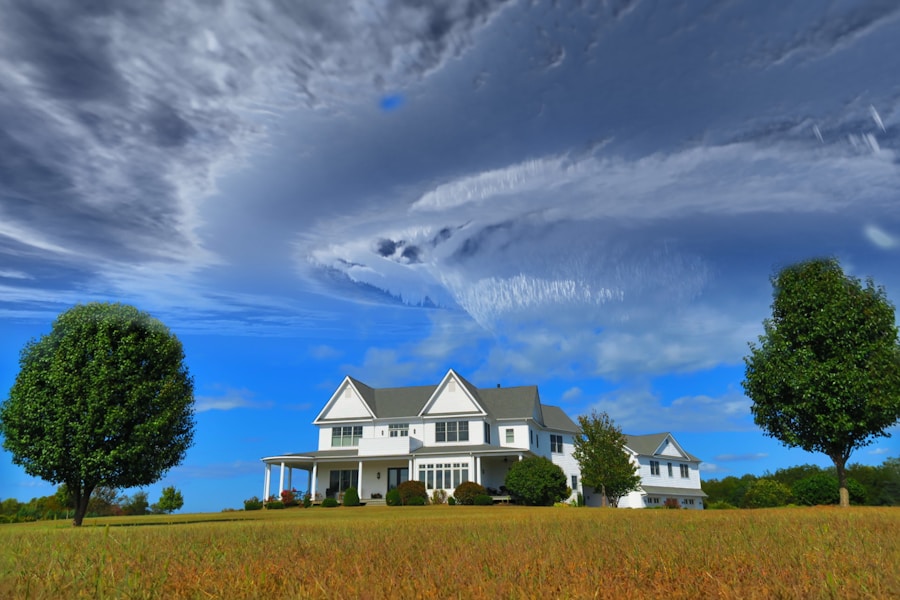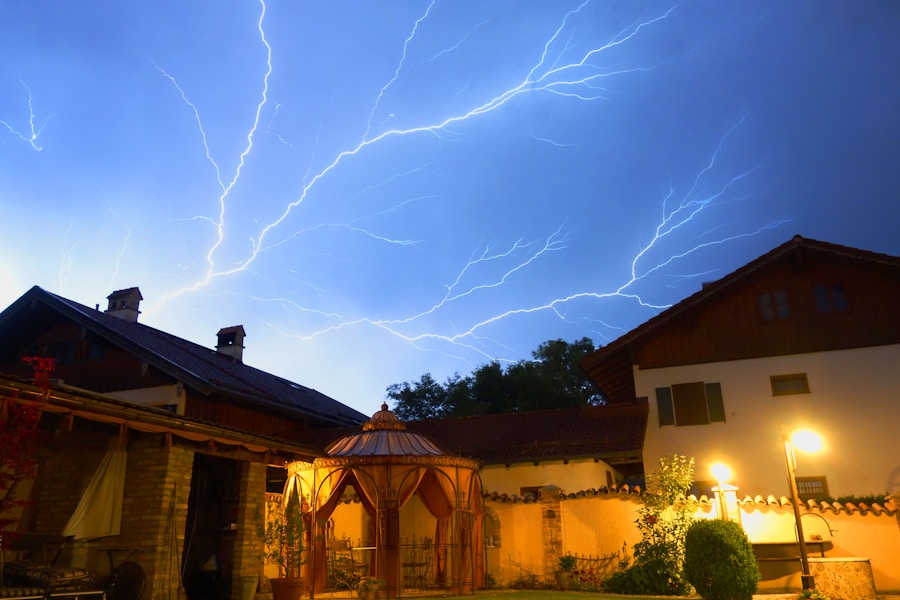As we move into 2025, the landscape of homeowners insurance is evolving, shaped by a myriad of factors that influence both the cost and availability of coverage. Homeowners insurance serves as a critical financial safety net, protecting individuals from potential losses due to damage or theft of their property. However, the costs associated with this essential coverage are not static; they fluctuate based on a variety of elements, including market conditions, regional risks, and individual homeowner characteristics.
Understanding these dynamics is crucial for homeowners seeking to navigate the complexities of insurance premiums in the current economic climate. In recent years, the insurance industry has faced significant challenges, including rising claims due to natural disasters, inflationary pressures, and shifts in consumer behavior. As we delve into 2025, it becomes increasingly important for homeowners to grasp how these factors interplay to shape their insurance costs.
This article will explore the various elements that contribute to homeowners insurance premiums, provide insights into average costs across different regions, and highlight emerging trends that may impact future pricing. By equipping homeowners with this knowledge, they can make informed decisions about their insurance needs and financial planning.
Key Takeaways
- Homeowners insurance costs are expected to rise in 2025 due to various factors such as inflation, increased construction costs, and climate change.
- Factors affecting homeowners insurance premiums include the location of the home, the age and condition of the home, the homeowner’s credit score, and the coverage options chosen.
- The average cost of homeowners insurance in 2025 is projected to be higher than in previous years, with an estimated increase of 5-8%.
- Regional variations in homeowners insurance costs are influenced by factors such as the frequency of natural disasters, crime rates, and local building costs.
- Trends in homeowners insurance pricing indicate a shift towards usage-based and customizable policies, as well as an increased focus on climate-related risks.
Factors Affecting Homeowners Insurance Premiums
Several key factors play a pivotal role in determining homeowners insurance premiums. One of the most significant is the location of the property. Homes situated in areas prone to natural disasters—such as hurricanes, floods, or wildfires—often face higher premiums due to the increased risk of claims.
For instance, a home located in Florida, which frequently experiences hurricanes, may incur substantially higher insurance costs compared to a property in a region with a more stable climate. Insurers assess these risks meticulously, often utilizing sophisticated modeling techniques to predict potential losses based on historical data. Another critical factor influencing premiums is the age and condition of the home.
Older homes may require more maintenance and repairs, leading insurers to view them as higher risk. Features such as outdated electrical systems, plumbing, or roofing can contribute to increased premiums. Additionally, the materials used in construction can also affect costs; for example, homes built with fire-resistant materials may qualify for lower premiums compared to those made from more combustible materials.
Homeowners who invest in renovations or upgrades that enhance safety and resilience may find that their efforts lead to reduced insurance costs over time.
Average Cost of Homeowners Insurance in 2025

As of 2025, the average cost of homeowners insurance has seen notable fluctuations compared to previous years. According to industry reports, the national average premium for homeowners insurance is projected to be around $1,800 annually. This figure represents an increase from previous years, reflecting ongoing trends in the insurance market and external economic pressures.
Factors such as inflation and rising construction costs have contributed to this upward trajectory, making it essential for homeowners to budget accordingly. Moreover, while the national average provides a useful benchmark, it is important to recognize that individual premiums can vary significantly based on specific circumstances. For instance, homeowners with higher-value properties or those living in high-risk areas may pay considerably more than the average.
Conversely, those who live in regions with lower risks or who have taken proactive measures to mitigate potential hazards may enjoy lower premiums. Understanding these nuances is vital for homeowners as they assess their own insurance needs and seek competitive rates.
Regional Variations in Homeowners Insurance Costs
Homeowners insurance costs are not uniform across the United States; rather, they exhibit considerable regional variations influenced by local risks and market conditions. For example, states like California and Texas often experience higher premiums due to their susceptibility to wildfires and severe weather events.
This stark contrast highlights how geographical factors can dramatically impact insurance costs. Conversely, states in the Midwest or Northeast may experience lower average premiums due to a more stable climate and fewer natural disaster risks. For instance, states like Ohio or Pennsylvania typically report average premiums closer to $1,200 or $1,500 annually.
However, even within these regions, local factors such as crime rates or proximity to bodies of water can further influence individual premiums. Homeowners should be aware of these regional differences when shopping for insurance and consider how their specific location may affect their overall costs.
Trends in Homeowners Insurance Pricing
The homeowners insurance market is currently witnessing several trends that are shaping pricing strategies and consumer behavior. One notable trend is the increasing use of technology in underwriting and claims processing. Insurers are leveraging data analytics and artificial intelligence to assess risk more accurately and streamline operations.
This technological shift not only enhances efficiency but also allows insurers to offer more personalized pricing based on individual homeowner profiles. Additionally, there is a growing emphasis on sustainability within the insurance industry. As environmental concerns gain prominence, insurers are beginning to reward homeowners who implement eco-friendly practices or invest in energy-efficient upgrades.
For example, some companies offer discounts for homes equipped with solar panels or energy-efficient appliances. This trend reflects a broader societal shift towards sustainability and may influence future pricing models as insurers adapt to changing consumer preferences.
Ways to Lower Homeowners Insurance Costs

Homeowners seeking to reduce their insurance costs have several strategies at their disposal. One effective approach is to increase deductibles—the amount a homeowner agrees to pay out-of-pocket before insurance kicks in.
However, it is crucial for individuals to ensure they can comfortably afford the deductible amount in case of a claim. Another strategy involves bundling insurance policies. Many insurers offer discounts for customers who purchase multiple types of coverage from them—such as combining homeowners and auto insurance policies.
This bundling not only simplifies management but can also lead to substantial savings on overall premiums. Additionally, maintaining a good credit score can positively impact insurance rates; insurers often consider credit history when determining premiums.
The Impact of Climate Change on Homeowners Insurance Costs
Climate change is increasingly becoming a central concern for the homeowners insurance industry, with far-reaching implications for pricing and coverage availability. As extreme weather events become more frequent and severe—such as hurricanes, floods, and wildfires—insurers are reevaluating their risk models and adjusting premiums accordingly. This shift is particularly evident in regions that have historically been considered low-risk but are now facing heightened threats due to changing climate patterns.
Moreover, climate change has prompted some insurers to reconsider their willingness to provide coverage in high-risk areas altogether. In certain regions prone to flooding or wildfires, insurers may impose stricter underwriting guidelines or even withdraw from the market entirely. This trend can leave homeowners with limited options for coverage and potentially drive up costs as competition diminishes.
As climate-related risks continue to evolve, homeowners must stay informed about how these changes may affect their insurance landscape.
What to Expect in Homeowners Insurance Costs in 2025
As we look ahead to 2025 and beyond, homeowners can anticipate a dynamic landscape for insurance costs shaped by various factors including regional risks, technological advancements, and climate change impacts. The average cost of homeowners insurance is likely to continue its upward trajectory due to inflationary pressures and increased claims from natural disasters. However, by understanding the factors influencing premiums and exploring strategies for cost reduction, homeowners can better navigate this complex environment.
Ultimately, staying informed about trends in the insurance market will empower homeowners to make proactive decisions regarding their coverage needs. Whether through investing in home improvements that enhance safety or leveraging technology for better risk assessment, there are numerous avenues available for individuals seeking to manage their homeowners insurance costs effectively in 2025 and beyond.
If you are interested in learning more about insurance costs, you may want to check out this article on auto insurance. It provides valuable information on how auto insurance rates may change in the future and what factors can impact the cost of coverage. Understanding the trends in auto insurance pricing can help you make informed decisions about your insurance needs and budget.
FAQs
What factors affect the cost of homeowners insurance in 2025?
In 2025, the cost of homeowners insurance is influenced by factors such as the location of the home, the age and condition of the home, the coverage limits and deductibles chosen, the homeowner’s credit score, and the presence of any additional risk factors such as a swimming pool or trampoline.
How has the cost of homeowners insurance changed in 2025 compared to previous years?
The cost of homeowners insurance in 2025 may have increased compared to previous years due to factors such as inflation, changes in building costs, and an increase in severe weather events. However, the specific changes in cost can vary depending on the location and individual circumstances.
Are there any new trends or developments affecting the cost of homeowners insurance in 2025?
In 2025, new trends and developments such as advancements in home security technology, changes in building codes, and shifts in the frequency and severity of natural disasters may impact the cost of homeowners insurance. Additionally, the insurance industry may introduce new coverage options and discounts that can affect pricing.
What are some strategies for homeowners to potentially lower the cost of insurance in 2025?
Homeowners in 2025 can potentially lower the cost of insurance by maintaining a good credit score, bundling their homeowners insurance with other policies, making home improvements to reduce risk, and comparing quotes from multiple insurance companies. Additionally, taking advantage of available discounts and adjusting coverage limits and deductibles can also help lower costs.


